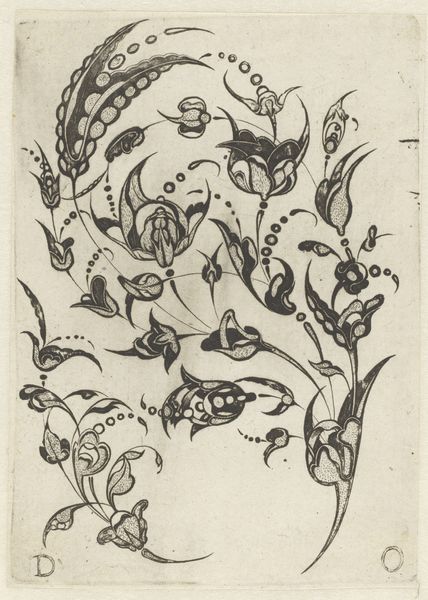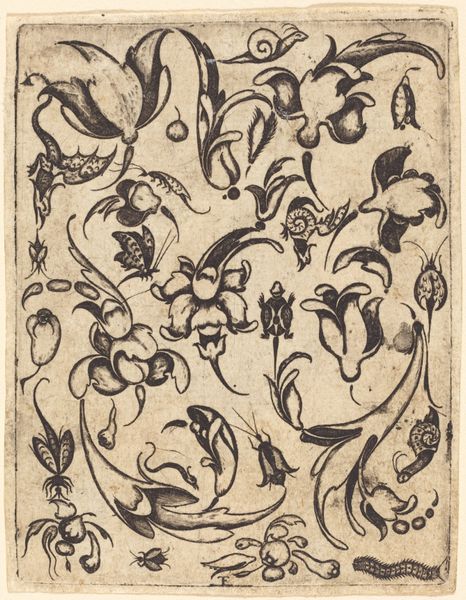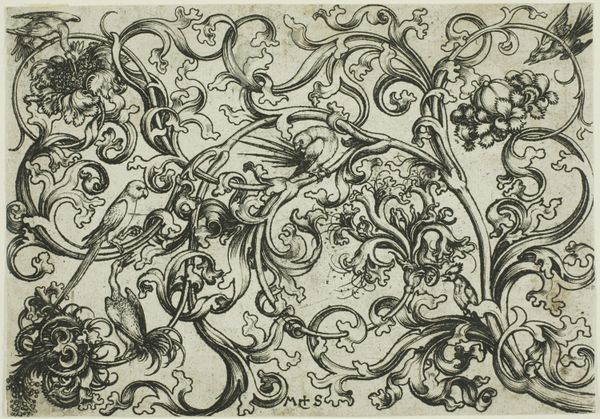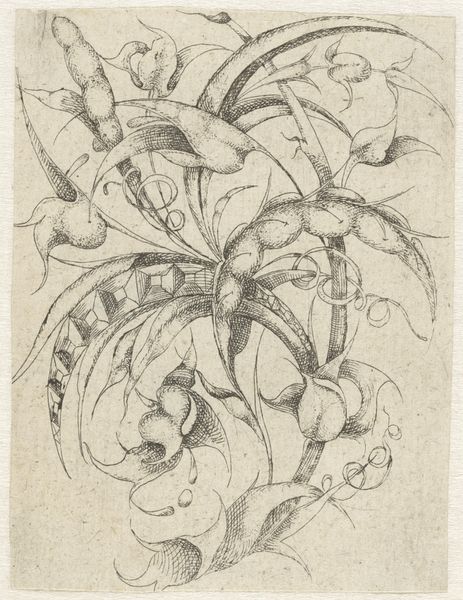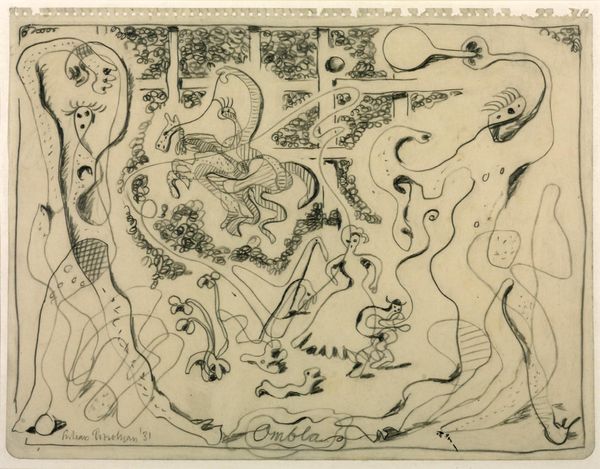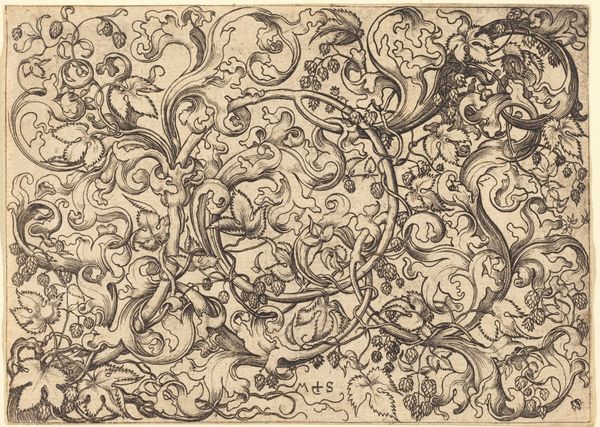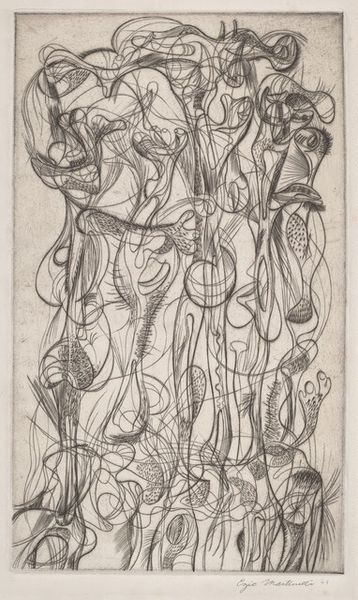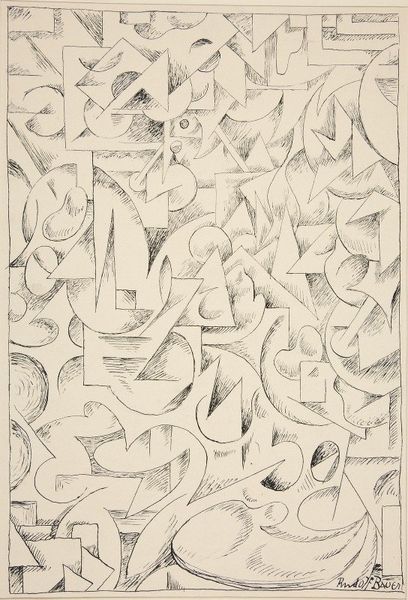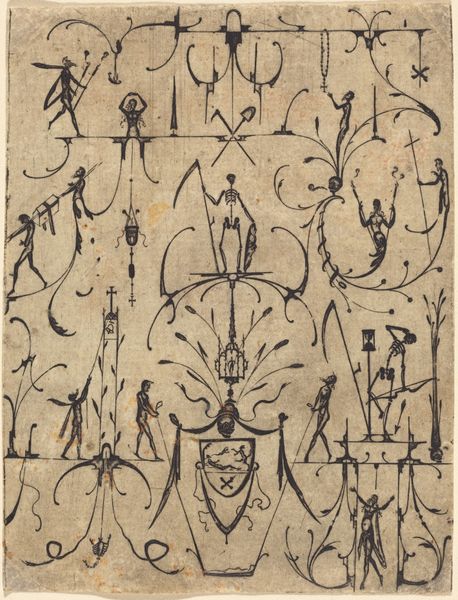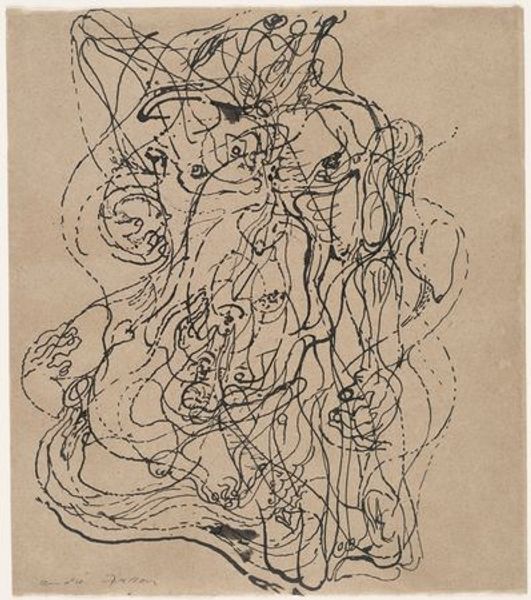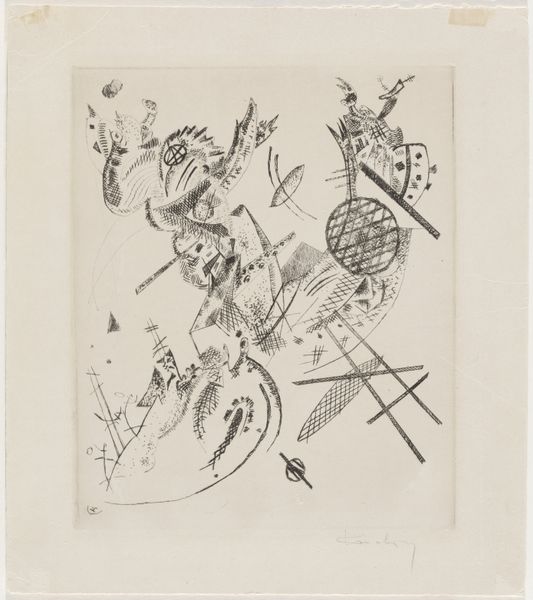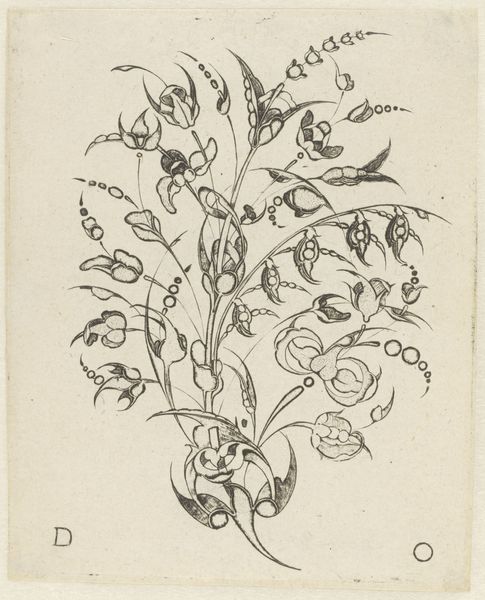
drawing, ink
#
drawing
#
baroque
#
pen drawing
#
ink
#
geometric
Dimensions: height 218 mm, width 152 mm
Copyright: Rijks Museum: Open Domain
Editor: This is "Goudsmidsboeket," a drawing in ink, dating to around 1625, by Rodolff Schulte. The stylized floral arrangement feels strangely artificial to me. How do you interpret this work? Curator: Considering its function reveals much. This wasn't intended as a botanical study, but as a design, a pattern. Designs like these were crucial to the booming goldsmith trade in the Netherlands. They weren't merely decorative; they were statements of wealth and taste, shaping how luxury goods communicated social standing. How does that understanding shift your perspective? Editor: It makes me see it differently. It's not about the beauty of nature, but about…commerce? This was essentially a blueprint for a status symbol. Curator: Precisely. Think about the institutional context: guilds regulated production, controlling quality and style. A design like this would circulate within that network, influencing generations of artisans and, subsequently, the tastes of the elite who purchased these objects. Who held the power? Was it the goldsmith who translated this design, or the wealthy patron eager to display this level of affluence? Editor: It seems like both were shaping each other's roles. The design itself is almost dictating what’s desirable. It really underscores the public role of art – and its politics. Curator: Exactly. And note the level of geometric abstraction. Even the seemingly natural elements are rigidly stylized. Do you think that’s an aesthetic choice, or perhaps something deeper about the period? Editor: Maybe it reflects a desire for order and control, mirroring the structured society and guild systems? I guess what seemed initially artificial was intentionally so, meant to communicate status in a very deliberate way. Curator: It does provide quite a shift in perspective to now think of this as an example of both the power of the artist but also the elite that dictated the artist's work. Editor: Absolutely, looking at it now, it is not a work of natural observation, but a political artefact reflecting social systems of the time.
Comments
No comments
Be the first to comment and join the conversation on the ultimate creative platform.
